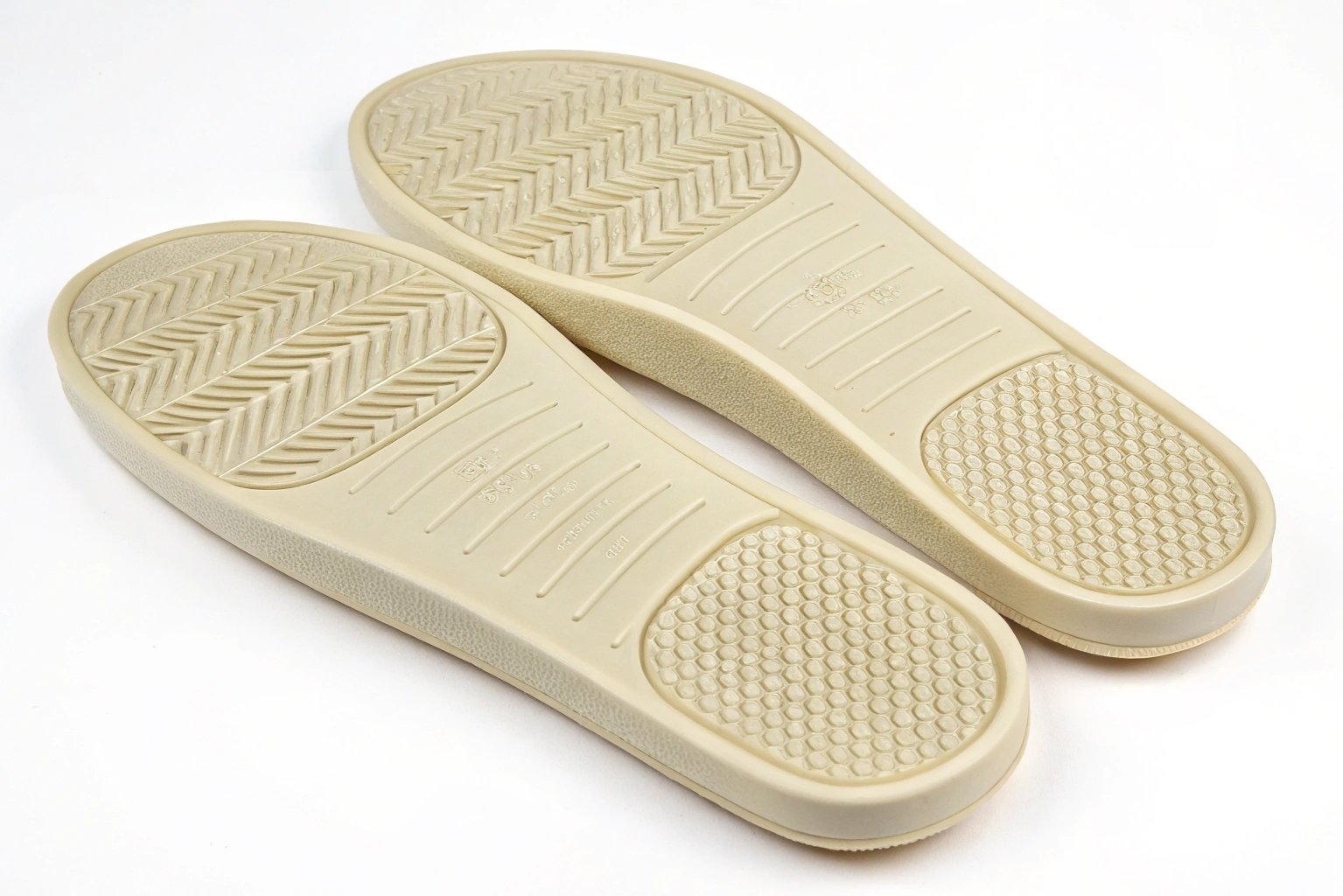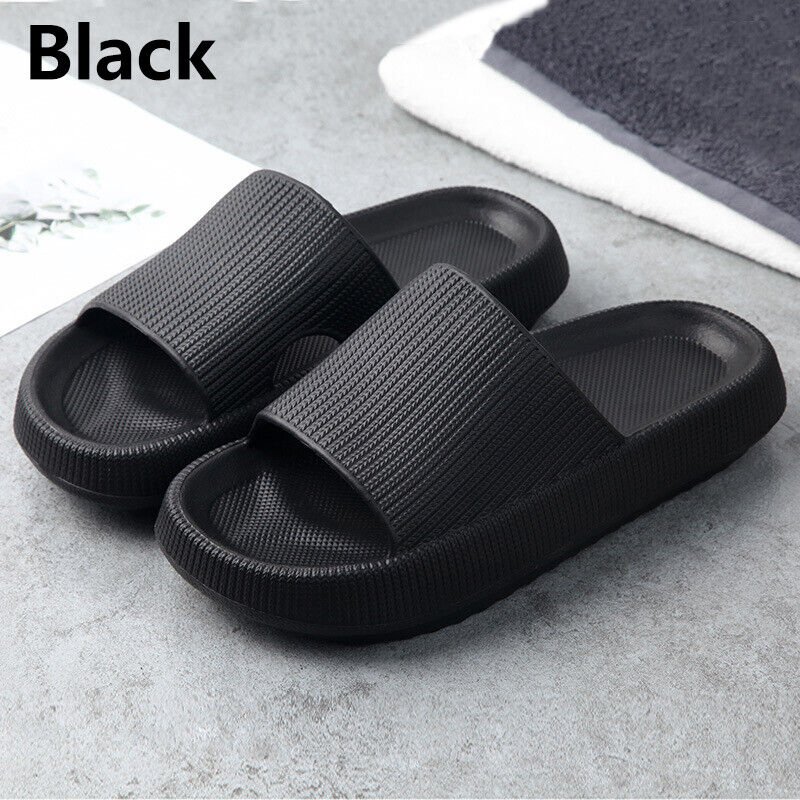Are your customers complaining about flimsy slipper soles? Do you want to find the sweet spot between comfort and cost? You’re not alone.
The ideal sole thickness for plastic slippers balances comfort, durability, and cost-effectiveness. For most applications, a thickness between 10mm and 15mm provides a good compromise.

Finding the right slipper sole thickness can be tricky. Too thin, and you risk discomfort and rapid wear. Too thick, and you add unnecessary cost and weight. Let’s dive into how to choose the perfect thickness.
Does Slipper Sole Thickness Really Matter?
Are you thinking that a few millimeters can’t make that much of a difference? Think again!
Yes, slipper sole thickness significantly impacts comfort, durability, and cost. A thicker sole provides better cushioning and lasts longer, but also increases material costs. The right balance is key for customer satisfaction and profitability.

So, why does this seemingly small detail matter so much? Well, let’s break it down. When I started in the slipper business, my dad always emphasized quality. He always said, "The sole is the soul of the slipper!" It’s true, isn’t it? The sole is the first thing your foot feels. It determines how comfortable the slipper is to wear. But there’s more to it than just comfort. A thicker sole is more durable. It can withstand more wear and tear, making the slipper last longer. This is important for customer satisfaction. No one wants slippers that fall apart after a few weeks.
However, a thicker sole also means more material. And more material means higher costs. This is where things get tricky. As a B2B supplier, I need to balance quality with affordability. My customers, the brand manufacturers, distributors, wholesalers, larger retailers, and promotional companies, all have different needs. Some prioritize comfort above all else. Others are more concerned with keeping costs down. It’s my job to help them find the right balance. This is why understanding the nuances of sole thickness is crucial. We need to think about the end-user, their activities, and their expectations.
Considerations for Optimal Slipper Sole Thickness
To make the right decision, let’s consider several factors that influence the ideal sole thickness:
| Factor | Impact |
|---|---|
| Comfort | Thicker soles generally provide more cushioning and support, leading to greater comfort, especially for extended wear. |
| Durability | Thicker soles are more resistant to wear and tear, extending the lifespan of the slipper. |
| Cost | Thicker soles require more material, increasing production costs. |
| Intended Use | Slippers for indoor use may require less thickness than those intended for outdoor use or for individuals with specific foot conditions. |
| Target Market | High-end brands may opt for thicker, more luxurious soles, while budget-friendly options may prioritize thinner soles to reduce costs. |
What are the common materials and thicknesses for plastic slipper soles?
Do you know what materials are best for different thicknesses? Are you confused about the best option for your slippers? Don’t worry, it’s a common question!
Common materials for plastic slipper soles include EVA, PVC, and rubber. EVA is lightweight and flexible, ideal for thinner soles (8-12mm). PVC is more durable and suitable for medium thicknesses (12-15mm). Rubber provides the best durability and is used for thicker soles (15mm+).

When I am advising my customers, material choice is important. In my experience, EVA (Ethylene-Vinyl Acetate) is very popular. EVA is lightweight and flexible, making it a great choice for indoor slippers. It also has good cushioning properties. Because of this, EVA is ideal for thinner soles, usually around 8-12mm.
PVC (Polyvinyl Chloride) is another common option. PVC is more durable than EVA and offers better water resistance. This makes it suitable for slippers that might be worn in damp environments, like bathrooms or poolside. PVC is generally used for medium-thickness soles, around 12-15mm.
Then there’s rubber. Rubber is the most durable option. It provides excellent grip and is highly resistant to wear and tear. Rubber soles are perfect for slippers that will be used outdoors or in high-traffic areas. Because of their durability, rubber soles are often thicker, usually 15mm or more. In addition to the material, density is also very important. Density means how tightly the material is packed. A higher density will result in a more durable sole. Also, the quality of the raw material is very important. Cheaper raw materials will result in lower quality soles that are not very durable. As a manufacturer, we are very strict about the raw materials we use. We only use high-quality materials to ensure that our slippers meet the highest standards. We also make sure our slippers pass CE, RoHS, REACH, and EN ISO 13287 standards.
Detailed Breakdown of Materials and Thicknesses
Here’s a more detailed table to guide your decision:
| Material | Thickness Range (mm) | Properties | Best For |
|---|---|---|---|
| EVA | 8-12 | Lightweight, flexible, good cushioning, affordable | Indoor slippers, promotional slippers, budget-friendly options |
| PVC | 12-15 | More durable than EVA, water-resistant, good balance of cost and performance | Slippers for bathrooms, poolside, general-purpose indoor/outdoor use |
| Rubber | 15+ | Highly durable, excellent grip, wear-resistant, more expensive | Outdoor slippers, high-traffic areas, slippers requiring maximum durability |
Remember, these are general guidelines. The best choice will depend on the specific needs of your customers.
Conclusion
Choosing the right slipper sole thickness involves balancing comfort, durability, and cost. Consider your target market and intended use for the best results.

